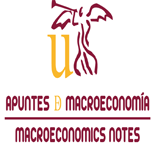
Macroeconomics is part of the study of economics. It focuses on the study of the economy as a whole and attempts to answer questions, such as, why nations grow, why there are economic crises, and why there is unemployment or inflation? These are daily questions and are at the base of national and international political discussions, as the correct answers at each moment, can lead to the implementation of appropriate economic policies to improve the life of the population. However, in order to carry out diagnoses correctly, it is necessary to have a good understanding of how the economy as a whole works and interacts. For this, the study of macroeconomics can be very useful.
However, it is not possible to approach the study of macroeconomic relationships by considering all the possibilities at once. We cannot understand economic behavior if we do not simplify and structure reality, in order to gradually understand how economic agents interact, and how some variables are related to others. In order to make these simplifications, economists use macroeconomic variables and models, which are simplifications of reality that help us in this task.
1.1. Macroeconomics and the models for its study
1.2. The circular flow model of economic activity
1.3. The real Gross Domestic Product (GDP). The National Income
1.4. Aggregate demand and the components of demand
1.5. The short-run macroeconomic equilibrium